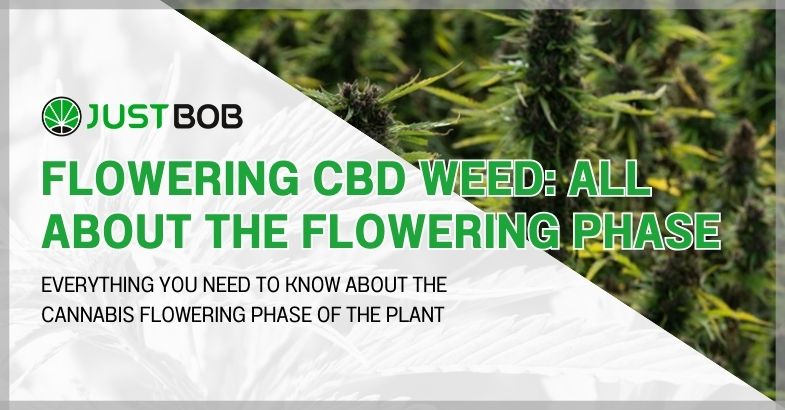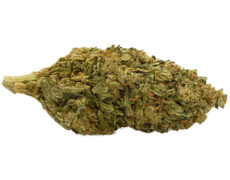Modified on: 29/10/2024
EVERYTHING YOU NEED TO KNOW ABOUT THE CANNABIS FLOWERING PHASE OF THE PLANT
Overview:
The cannabis flowering phase, also known as blooming, is a crucial phase in the life cycle of the cannabis plant. It usually lasts from 1/3 to 6 weeks and begins when the plant is in the last weeks of the growth phase and the days are getting shorter. During this phase, female cannabis plants produce white hairs, also called flowers (or CBD flowers ), which are the harbingers of the coveted buds.
During the cannabis flowering phase, it is crucial to create the right conditions to achieve the best results. Temperature, humidity and pH should be closely monitored as they can affect the growth of the flowers. Most growers keep the temperature constant during this time at around 18 hours of light and 12 hours of darkness. This light cycle simulates the natural progression of the seasons and signals to the plant that it is time to flower.
-
 SMALL & BIG
SMALL & BIGBUBBLEGUM
Starting from: 1,25CHF/gIndoor | CBD – CBDA <22%
Grams3 5 10 20 50 100 -


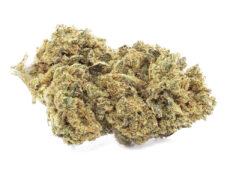
DO SI DOS
Starting from: 2,00CHF/gIndoor | CBD – CBDA < 19%
Grams3 5 10 20 50 100 -


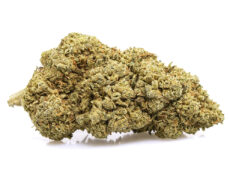
ROYAL GG#4
Starting from: 2,30CHF/gIndoor | CBD – CBDA < 40%
Grams3 5 10 20 50 100 -


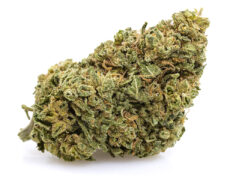
GORILLA GLUE
Starting from: 2,90CHF/gIndoor | CBD – CBDA < 20%
Grams3 5 10 20 50 100
In addition to lighting conditions, the supply of nutrients in the form of phosphorus, potassium and other similar substances is crucial for the formation of healthy flowers. In the first 1/5 to 25 weeks before harvest, the cannabis plant should be provided with the right nutrients for the best results. During this time, the trichomes on the flowers begin to grow and mature, which is a clear sign of the impending harvest.
It is important to note that male plants should be identified and removed during the flowering phase to avoid pollinating the female plants, which would prevent the formation of seeds. Growers should also ensure that the cannabis plants have enough space and the right size to develop healthy buds.
The flowering phase, as mentioned, usually lasts about 1/2 to 4 weeks, but this can vary depending on the strain. Sativa strains often have a longer flowering period of up to 10 weeks, while indica strains flower for a shorter period. At the end of the flowering phase, the flushing process begins, where the plants are only provided with water to avoid excess nutrients.
The flowering phase of the cannabis plant is an exciting time for growers as they get to see the fruits of their hard work. However, it requires careful care and attention to harvest the best buds. With the right conditions and knowledge of how to accurately control the flowering phase, growers can grow high-quality cannabis or cannabis CBD with less effort.
Also read: What is hybrid marijuana and how to recognize this variety
The 12 hour light flowering phase of cannabis
In the world of cannabis cultivation, the flowering phase is a crucial time during which growers must pay attention to various factors in order to achieve high-quality harvests. The duration and specific conditions of this phase can vary from strain to strain, but in this article we will focus on the light flowering phase, which is of particular interest to many cannabis growers.
The 12 hour light flowering phase usually occurs in the final phase of flowering. At this point, the female cannabis plants have fully developed their reproductive organs and are ready to produce flowers. The male plants are often detected and removed during this phase so as not to pollinate the female plants, as this would prevent the formation of seeds.
During this time, the female cannabis plant will produce the characteristic white hairs known as buds. Flowering is an exciting process during which the plant begins to develop high-quality buds. It is important to note that flowering is closely related to lighting conditions.
Growers often use what is called a “grow room” to control the lighting conditions during the light-flowering phase. In this room, they can precisely control the light cycle by setting the lighting to 12 hours of light and 12 hours of darkness. This simulates the natural light cycle that plants experience outdoors during the fall. This light pattern signals the plant that it is time to flower.
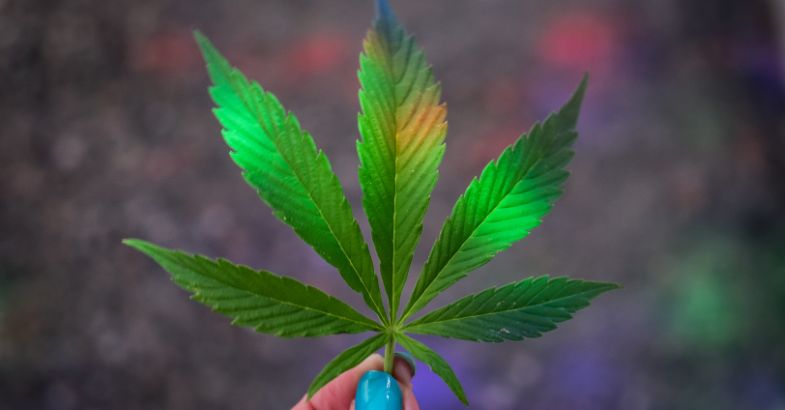

Exactly when the light flowering phase begins depends on the strain. Some strains can enter this phase after just a short time of flowering, while others may take up to two weeks. Growers should familiarize themselves with the specific characteristics of their strain in order to plan the exact timing of the transition to the flowering phase.
The temperature and humidity in the grow room are other important factors that must be carefully controlled during this phase. The cannabis plant is more susceptible to stress and disease during this time, so growers need to make sure that the conditions are optimal.
Overall, the 12-hour light flowering phase of cannabis is a crucial part of growing high-quality cannabis. The ability to precisely control the light levels, temperature and humidity in the grow room can make the difference between average and top-notch harvests. With the right knowledge and care, growers can produce beautiful, resinous flowers that will satisfy the needs of the most discerning cannabis lovers.
But let’s delve deeper into the phase by phase.
Phase one: early flowering
Female plants play a crucial role in the first phase of the cannabis plant, early flowering. Successful flowering depends on several factors, including the correct use of phosphorus and potassium, which are essential nutrients for the plant’s growth.
During this crucial phase, you can learn how to best meet the needs of your female cannabis plants. It is important to keep an eye on the temperatures day by day, as they have a significant impact on the flowering process. Fluctuations in temperatures can disrupt flower formation, so care must be taken to maintain optimal conditions.
Recognizing the needs of plants during this phase makes it possible to ensure a healthy and productive flowering period. Proper care and attention will translate into a rich harvest.
Weeks 1–3: Transition
During these three weeks, you may notice a sudden increase in cannabis growth. The plant must be large and strong enough to support the buds that will grow in the next few weeks: remember that they can double or even triple in size to eventually produce CBD weed and other products.
During the transition phase, the plants are still very resilient, so it is easy to recover if something goes wrong.
The energy normally used for seed production is diverted to increase the size and quantity of buds because flowering male cannabis plants do not release pollen.
In the female flowers, on the other hand, many white pistils begin to sprout, which are usually accompanied by individual leaves located above the main spadix.
At this stage, it is important to feed the plants properly: if the wrong minerals are supplied, there is a risk of stunted growth, i.e. fewer and smaller buds.
If a grower knows they have room under the lights, they may decide to gently bend the stems and move them away from the center. This technique is called Low Stress Training (LST) and helps keep the foliage flat and ensures maximum light exposure.
By using LST at the beginning of the flowering phase of cannabis CBD, the yield can be effectively increased by up to 40%.
Weeks 3–4: Bud formation
During this time, growth will slow down. The plant should be about 50% larger than it was three weeks earlier.
At this point, the actual buds begin to form, from which white pistils appear to sprout.
In the third and fourth week, the plant should still be lush and green. If you notice a change in the color of the leaves, there are two possible causes:
- Discoloration and rapid leaf loss could indicate a nutrient deficiency. This is an easily treatable problem if detected early;
- On the other hand, if the leaf tips turn yellow/brown or look burnt, this is nutation burn. To treat this problem, excess nutrients must be flushed out with pH-balanced water. If left untreated, the plants will no longer be able to produce nutrients themselves.
However, it may happen that the lower leaves turn yellow or fall off: this is a normal phenomenon due to the lack of sun in the lower part of the plant.
Also read: Rick Simpson Oil (RSO): what is it and does it really work?
Phase two: medium flowering period
During the cannabis flowering phase, especially in phase two, lighting plays a crucial role. During this time, cannabis plants need 12 hours of light and 12 hours of darkness to optimally promote flower growth.
The mid-flowering phase spans 2-3 weeks of flowering, during which female plants develop their flower heads. It is important to pay attention to phosphorus and potassium levels during this time to ensure plants are receiving the right nutrients.
The right temperature and humidity are crucial to promote bud and flower growth. Most cannabis plants thrive in temperatures between 20-28 degrees Celsius and a humidity of 40-50%.
During this phase, the trichomes grow on the flowers and it is the best time to prepare for harvest. This usually takes about 10 weeks, depending on the strain and conditions.
At the end of the flowering phase, flushing the cannabis plant should be considered to remove most of the nutrients from the medium and ensure a clean harvest.
It is important to be able to see and recognize exactly when the plants are ready to harvest to avoid the final growth spurt, which usually takes a few days.
Lighting, strain and flowering seeds play a crucial role in this growth phase, so it is important to keep this in mind and pay close attention to it in order to get the best buds.
Let us now turn to the details of the second phase.
Weeks 4–6: The buds swell
Later, in the flowering phase of cannabis light , you can expect the buds to swell and still have a bunch of white pistils sprouting in all directions.
During this phase, the grower should pay particular attention to keeping the heavy buds upright.
However, if the plants are growing too close to the lights, the last resort is super cropping: this means forcing the plants’ stems into a 90-degree angle. We have deliberately called this a “last resort” because there is a risk that this technique puts too much stress on the plant.
Experienced growers are beginning to consider strategic defoliation on heavily leafed plants. Exposing the buds to light is a good tactic, but it is necessary to retain enough leaves to carry the plant to harvest.
Weeks 6–8: bud ripening (the last weeks before harvest)
The flowering cannabis has entered the next phase : the buds begin to ripen and the pistils become dark.
At this point, you will no longer see any vegetative growth as the plant is using all its energy to form strong buds in the final stages.
Here the experienced gardener has to be much more careful.
Why?
It’s simple: the plant has a much higher need for nutrients and is much more sensitive to the problems caused by these. Nitrogen, for example, is used less by the plant and if it accumulates in the leaves, self-pollination can occur, which is harmful to the plant.
You may also observe a phenomenon called ‘foxtailing’: this is a phase in which buds form on the bottom or sides of existing buds. However, foxtailing is not always bad news, as it can also be a genetic problem.
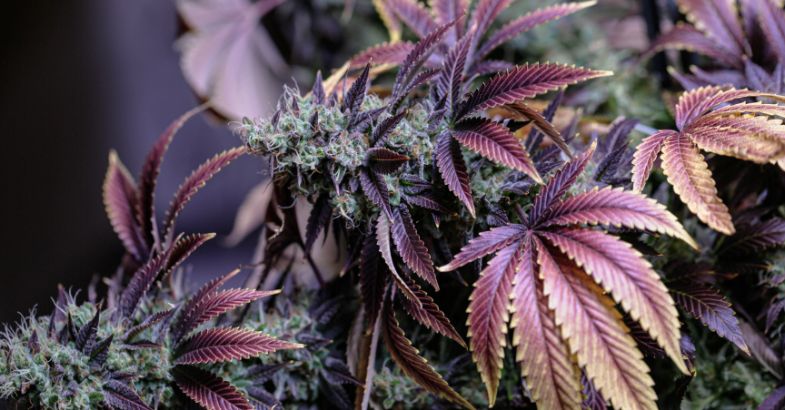

Late flowering
Well, this is the final phase of cannabis flowering .
The cannabis flowering phase reaches its peak in the final phase. Lighting plays a crucial role here, as the plants still need 12 hours of light and 12 hours of darkness to complete flower formation.
During this final flowering phase of about 2-3 weeks, the female plants put all their energy into developing the flower heads. During this stage, it is crucial to pay attention to the correct levels of phosphorus and potassium to ensure that the plants receive the nutrients they need.
The last periods of flowering are characterized by intensive growth of the flowers, which become ripe and ready for harvest. After about 10 weeks, depending on the variety and growing conditions, the time for harvest has come.
Humidity and temperature are also crucial in this phase. Humidity should be between 40-50% and temperatures should be kept constant for optimal results.
It is important to closely monitor the development of the buds and the development of the trichomes in order not to miss the right time to harvest. The variety and the exact choice of strain play an important role here.
During this phase, it is crucial to accurately identify when the plants are ready to harvest. It usually takes a few days to ensure that the flowers reach the desired maturity and quality.
Growing cannabis requires care and attention until the final stage of flowering to achieve the best results and ensure a quality harvest.
Week 8+: Rinse and Harvest
Flushing: Flushing refers to watering the plants with pure, pH-balanced water, without any nutrients or fertilizers. This is to remove excess nutrients from the root system, making the final product cleaner and more flavorful. Flushing should usually begin about two weeks before the planned harvest.
During flushing, all nutrient residues are removed from the medium and the plant begins to use up its own reserves. The leaves may discolor and turn yellow during this process, which is a normal sign of aging. Flushing provides a smooth transition to harvest and reduces the likelihood of undesirable flavors.
Harvesting: Harvesting is the culmination of the cultivation process. The time of harvest depends on the desired maturity and concentration of active ingredients. The flowers should be ripe and checked for the desired maturity using a trichome viewing magnifier. The trichomes are small, resinous glands on the flowers that contain the psychoactive THC and other cannabinoids, such as Cannabidiol, which can have different effects on the body than THC.
When the trichomes are milky and slightly amber, the flowers are usually ready to harvest. When the trichomes are mostly milky, it will produce a clearer, more energetic high, while more amber trichomes will produce a more relaxing high.
Harvesting is done by carefully removing the flowers with sharp scissors and then drying them. Drying and curing the flowers are other important steps to optimize the taste and quality. This makes you understand that cannabis breeding is a real form of art!
Week eight and beyond are crucial steps to cultivate high-quality cannabis plants and ensure an optimal end product. With patience and care, the reward will be high-quality, flavorful buds.
There are a few signs to look for as you approach harvest time. The variety you are growing will determine the week you can harvest.
With a few exceptions, the pistils usually turn orange at this stage, which means the plant is no longer producing new buds. During this phase of the cannabis flowering cycle, the trichomes change from clear to amber as the THC content increases.
An experienced grower knows that the plant is very sensitive during this phase of cannabis flowering.
When harvest time comes, the plants need to be flushed by replacing the nutrients with pH-balanced water. Depending on the length of the cannabis flowering cycle, you will need to flush one to two weeks before the expected harvest.
Conclusions
In this article, we have tried to provide an overview of the flowering phase of CBD cannabis for informational purposes.
So, if you are passionate about the world of marijuana, you should know all about JustBob, the CBD shop that offers the best quality cannabis.
We look forward to seeing you on JustBob, see you soon!

